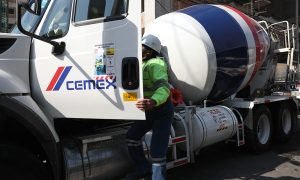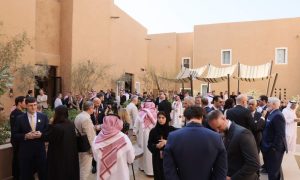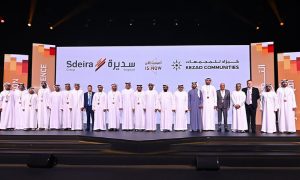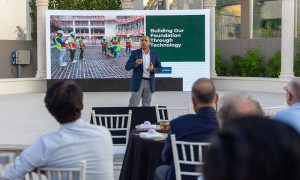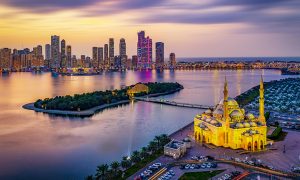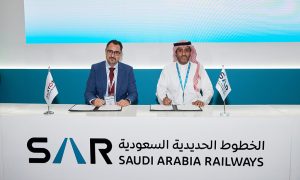The prime movers
Regional investment into ports and logistical hubs has raised the profile of the humble forklift in the market. Buyers have an enviable choice when it comes to equipment both all used and new. The used market has proven to be particularly strong as the combination of a higher demand in a difficult economic environment has […]

Regional investment into ports and logistical hubs has raised the profile of the humble forklift in the market. Buyers have an enviable choice when it comes to equipment both all used and new.
The used market has proven to be particularly strong as the combination of a higher demand in a difficult economic environment has made the importing of equipment a popular move for companies.
Paul de Jong, sales manager Middle East and Africa at Forkliftcenter, says that prices for reach stackers and empty container handlers are also likely to be affected by the extra capacities that are coming on-stream in the GCC. Forkliftcenter ships in equipment to the region, selling to traders and clients needing equipment from 1t material handlers and upwards, he tells CMME. Some countries like the UAE have well-established logistics hubs like Jebel Ali, others like Qatar are in the process of building up their capacities. With imports outstripping exports, he says that some customers needs are better suited for empty container handlers rather than reach stackers.
“The last time I was in Doha I had three meetings with empty container depot (companies),” he explains.
“Here in the region, your DP Worlds, Abu Dhabi ports buy new equipment which they re-new every five years because containers are used. However there are also mainland/inland terminals that don’t have that intensity of use. For them to buy new doesn’t make sense. They have more time to maintain their equipment.”
Used reach stackers can also be used in other applications he explains.
“I’ve seen them used in pipelaying. You can use the twist interlock on a reach stacker to do heavy lifting. If you have steel plates like you find on construction sites they can be used instead of cranes.
De Jong adds: “The advantage for some companies is that they be resold afterwards.”
One of the more intriguing moves in the new market in the region is the progress of forklift company Etali, which is looking to produce European standard equipment in KSA. While it is still early days in terms of a start up, co-founder David O’Callaghan hopes production could start late this year.
In terms of new equipment technology, manufacturers are increasingly evaluating how new technology can make operations more productive. New vehicles such as rolling ladders are now being used in some locations for picking.
More attention is also being given to ergonomics, which has resulted in new features that enhance operator comfort. Everything from the control handles and steering wheels, to the seat and flexible floorboards, and even the way operators step on and off the truck has been enhanced with ergonomic features.
New advancements in mast design have greatly improved visibility as well.
At last year’s Material Handling event in Linde dealer FAMCO launched the company’s Innovative Electronic Counterbalance E25 series of E-trucks into the market.
The range of trucks is powered by 80V system armed with high-torque lifting and driving motors using AC technology. These new forklifts are known for their productive output with high standards of safety and ergonomics for the logistics & 3 PLs, pharmaceutical, FMCG & foodstuff industries.
“By launching these new forklifts at Materials Handling Middle East, we aim to create market awareness about the advantages of our products to the wider market,” said David Dronfield, General Manager, Storage Handling Solutions at FAMCO before the event. “Additionally, we aim to educate the market on the solutions and professional consultancy we provide,” he added.
Its relationship with sector player Hyster makes Kanoo Machinery a major force in the Middle East, including the key Saudi Arabian market. High oil prices and an increase in the cost of rubber is encouraging some port operators to rethink their operation to reduce their long term costs and improve their viability.
According to the equipment manufacturer, ports all over the world are adopting new Hyster technologies that significantly reduce the consumption of these important commodities.
“Hyster recently introduced fuel savings up to 15% for the life of a vehicle with new energy efficient technologies” Jan-Willem van den Brand, product strategy manager for Hyster Big Trucks said last year. “This is a massive saving for operators of high capacity forklift trucks and container handling fleets.”
Hyster achieved the savings by combining Cummins engine technology with performance optimisation developments such as cooling on demand, RPM management and alternate engine idle speed.
“Hyster has a reputation for designing tough and dependable trucks with a low cost of operation and we have now managed to make an unmistakable difference at the pumps” he commented.
According to van den Brand, the entire Hyster ‘Big Truck’ range over 16 tonnes is Tier 4i/Stage IIIB compliant and delivers massive financial savings.
A number of container ports in the Middle East, South Africa, Europe, US and Asia have also received the first batch of empty container handlers that incorporate Hyster tyre saving technology which reduces tyre wear up to a factor of three.
“Tyres on large container handlers are not only costly and time consuming to change, they produce a great deal of waste and the availability may not always be there” remarked van den Brand.
“With the rising price of rubber, it is not surprising that container ports are adopting this technology.”









